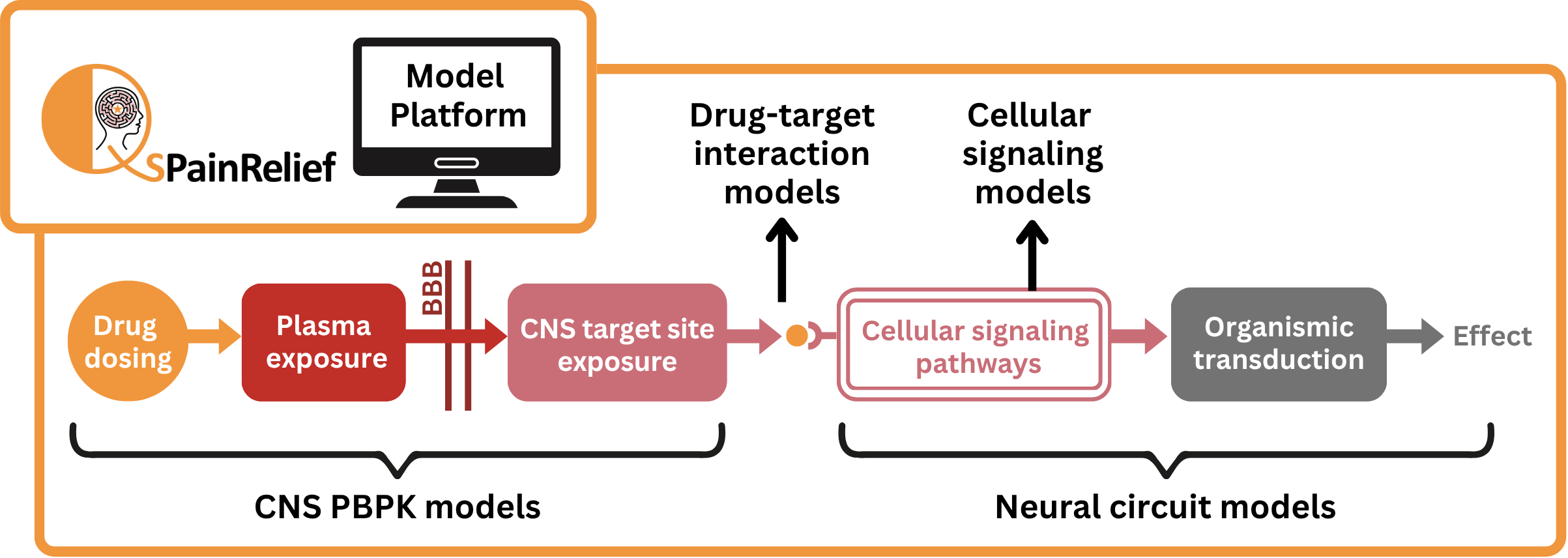The overall objective of QSPainRelief was to discover effective novel combination treatments, using existing drugs in chronic pain treatment and applying a quantitative systems pharmacology (QSP) pain relief approach, by developing an in silico discovery QSPainRelief platform that addresses the heterogeneity between patients, including sex and gender differences – with the ultimate goal of identifying the most effective therapeutic interventions to increase pain relief and diminish side-effects for individual patients. The identification of promising new combinations of existing drugs can now be directly considered by health care professionals, whilst unfavourable combinations can be more easily avoided and carefully monitored. Both the identification of the favourable and the unfavourable drug combinations shall directly benefit patients.
These were the 5 key objectives of QSPainRelief:
- To develop a new in silico tool to discover new existing drug combinations to be validated by ethics-controlled preclinical and clinical studies, for better treatment of stratified patient sub-groups and individual patients (personalised medicine) in a cost-effective manner
- To understand chronic pain, improve analgesia, and reduce side effects in patients with chronic pain in a quantitative and predictive manner
- To understand the influence of age, sex versus gender, disease and comorbidities, as well as genetic factors on analgesia and adverse effects of combinational treatments for chronic pain
- To develop clinical guidance documents and to disseminate the results of QSPainRelief to stakeholders like scientists, health care providers, regulators, health insurance agencies, and patient organisations for direct consideration in the clinical setting
- To provide increased research and innovation opportunities, particularly for small and medium-sized enterprises (SMEs)

The QSPainRelief model platform assembles mechanistic models for improved insights into the physiologically based pharmacokinetic (PBPK) mechanisms of pain medications occurring, for example, at the blood-brain barrier (BBB), at target sites within the central nervous system (CNS), at the cellular and intracellular level, and regarding the neural transduction of the desired pain-relieving effect. The ultimate goal is to gain a better retrospective as well as a better predictive understanding of chronic pain treatment effects in individual patients.